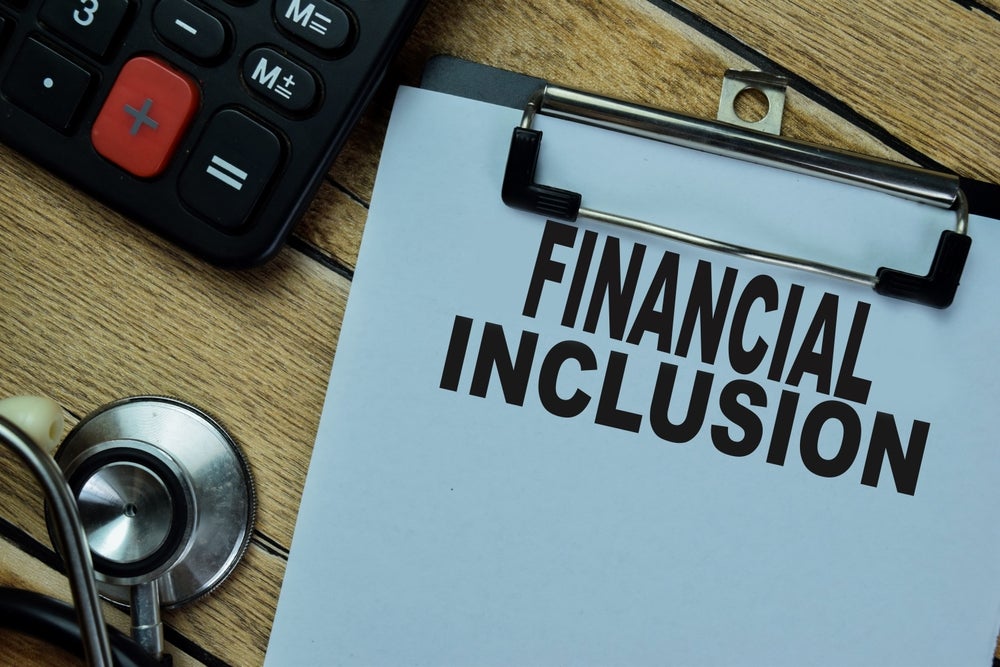A bank account – and the identity verification needed to open these – should be a right for all. The two go hand in hand in enabling people to legally gain employment, register at an address, take out a loan, set up a mobile phone contract, apply for settled status among many other things.
Easy access to these also creates huge economic value for governments and financial institutions alike. According to McKinsey, extending full digital ID coverage could unlock economic value equivalent to up to 13% of GDP by the year 2030.
While it rarely hits the headlines, there are a huge number of people living in poverty in the UK, with an estimated 1.2 million people who do not have access to a bank account. This can be for a variety of reasons for example: they are young, do not have access to an issued identity, have poor or no credit history, are migrants, or lack a permanent address.
Financial inclusion is a critical aspect of a thriving economy as it ensures that all individuals, regardless of their socio-economic status, have access to essential financial services. In today’s digital age, financial inclusion and digital identity are intricately connected.
The relationship between financial inclusion and digital identity
Digital identity solutions provide a gateway to financial services for unbanked and underprivileged populations, opening up opportunities for economic growth and empowerment. Without ID people struggle to find employment, access healthcare services and vote. Not having the means to open a bank account also prevents them from taking out loans and making secure payments ultimately meaning they face financial exclusion.
Here we explore the profound relationship between financial inclusion and digital identity which ultimately boils down to delivering the highest level of security and accessibility. Unsurprisingly, there’s a growing urgency for banks and other financial organisations to tackle both of these issues due to the following factors.
Greater security requirements facing financial institutions
Remote onboarding and digital banking have experienced exponential growth in recent years. With the market size set to more than double to $19.2bn by 2028, the onus is on financial institutions to find more innovative ways to acquire new customers while remaining compliant. Banks and credit unions must also be sure that their customers’ identities are genuine and that they are lawfully allowed to use the services offered by the said organisation. In their pursuit to simplify the end user’s journey and enhance security, the use of biometric identity verification and eKYC (electronic Know Your Customer) checks have become essential tools.
Growing attack surface
To mitigate the risk of being exploited for criminal purposes, banks and financial organisations must deliver high assurance that end-users are who they claim to be when enrolling remotely and when making transactions.
Verification is key and due to its ease and convenience biometric face verification is quickly becoming the chosen method of identity verification by an increasing number of organisations.
Liveness detection is a technology incorporated into biometric systems that detects whether the user is a real, ‘live’ person and not a recording, picture, or other non-living spoof. However, not all biometric verification is created equal, and solutions vary in accessibility, bias mitigation, and protection against biometric threat vectors, including sophisticated generative AI-produced attacks.
The liveness technology must provide proven defences against current and future biometric attacks to national-level security standards and remain effective in the evolving biometric landscape. Failure to do so harms individuals and organisations and undermines trust in digital identity solutions.
Passive liveness technology
Biometric face verification provides a quick, convenient experience for enrolment and authentication and, when deployed correctly, can offer high levels of inclusivity and accessibility. To verify their identity, the user needs only to scan an identity document and their face using any device with a front-facing camera, such as a smartphone or laptop. To re-authenticate, the user simply scans their face. This liveness technology is referred to as passive as it does not rely on the end user’s technical ability to read any complex instructions or perform any actions.
One particularly advantageous aspect of passive liveness technology for individuals who may face challenges in performing specific actions due to physical disabilities or cultural differences is that it ensures the authentication process is passive and non-intrusive. Similarly, in the case of versatility across devices, passive liveness technology can be implemented across various devices including smartphones, tablets, and computers which is crucial for financial inclusion efforts in regions where mobile devices are the primary means of accessing financial services.
Other remote identity verification methods lack such accessibility. Video call verification, whereby the user verifies their identity via a one-to-one call with a trained operator, is liable to exclude people with language barriers or cognitive impairments. These individuals may be unwilling to engage in a two-way conversation with a stranger. Likewise, biometric face verification is a marked improvement on traditional authentication technologies, such as passwords and CAPTCHA. These not only lack user convenience but also limit access to people with disabilities.
Operational testing to mitigate bias
Biometric verification or liveness detection solutions vary in inaccessibility and bias mitigation. Systems must ensure the datasets used to train the algorithms are balanced according to age, gender, and skin tone. Yet, this on its own is not enough to sufficiently reduce bias. Systems must also perform operational testing to mitigate bias based on differences in camera types, user behaviour, and environmental conditions, which can affect performance.
Someone with a low income may use a lower-quality camera than someone with a high income. If the biometric technology cannot perform equally well for both of these user groups, identity programs will fall prey to bias. The biometric systems used must test for and mitigate these causes of bias. To deliver maximum inclusivity, security, and utility, digital identity programs must incorporate biometric verification and liveness detection for enrolment and authentication. Nevertheless, large-scale pilots must ensure these components exhibit bias mitigation and accessibility with the solution found in advanced biometric facial verification security.
Financial inclusion and digital identity are undeniably interconnected, and this synergy presents a promising path toward greater economic growth, equality, and social empowerment. By leveraging digital identity solutions, individuals, particularly those who are unbanked or underserved, can access the financial services they need to secure their financial future. While challenges and concerns persist, ongoing innovation, collaboration, and responsible regulation can help harness the full potential of this interconnected relationship, driving progress and financial inclusion on a global scale.
Miguel Traquina is CIO at iProov








